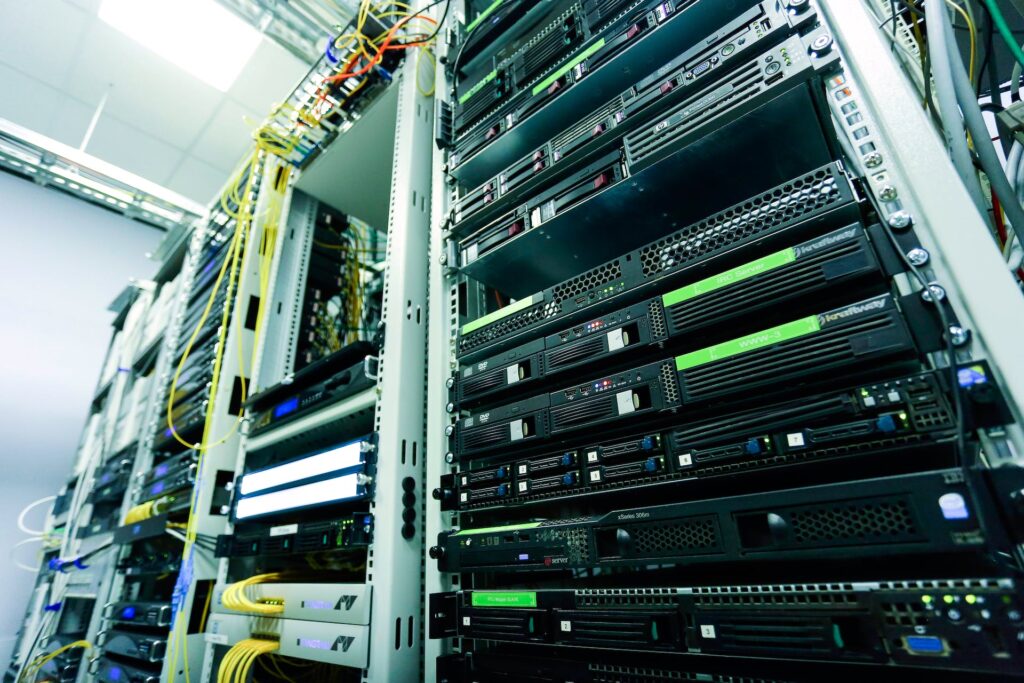Data center energy usage isn’t something that most people think about on a daily basis. However, it is an important factor to consider when running a business.
Data centers are responsible for consuming vast amounts of energy, and the costs associated with powering them can add up quickly. In order to stay competitive and efficient in today’s digitally-driven world, businesses need to change their perspective. They must understand what data center energy usage means for their operations.
Understanding Data Center Energy Consumption

Data centers consume enormous amounts of energy in order to power the servers, cooling systems, and networking equipment housed within them. This amount of energy consumption can have serious financial implications for any organization. Especially if the organization is relying on the infrastructure to operate its IT functions.
Fortunately, there are a number of steps you can take to reduce data center energy usage and keep costs under control.
The Basics of Data Center Energy Usage

We can typically divide data centers into two categories: large enterprise-level systems and smaller on-premise systems.
Enterprise-level systems require significantly more energy to run than on-premise systems. This is because they contain more equipment and need to maintain a certain level of redundancy. If they fail to do so, they can’t ensure maximum uptime.
On the other hand, an on-premise system usually contains fewer components but still requires power for cooling, networking, and other IT functions.
Data Center Efficiency Measures

Data center efficiency measures involve everything from server consolidation and virtualization to the use of renewable energy sources.
Server consolidation is the process of reducing the number of physical servers in a data center, which can significantly reduce energy consumption.
Virtualization is also an important factor when it comes to efficiency. It allows for multiple virtual machines to run on one physical server.
Renewable energy sources such as solar, wind, and hydroelectricity are also becoming increasingly popular. They serve as good alternatives to traditional data center power sources. These renewable energy sources can help reduce costs while providing a clean and sustainable source of power.
Data Center Energy Optimization Techniques
In addition to the aforementioned measures, there are a number of other techniques you can use to optimize energy usage in a data center. This includes adjusting cooling settings, using efficient storage solutions such as flash storage, and taking advantage of power management tools.
AiNET offers secure, reliable cloud storage and fiber optic internet services for businesses. With their scalable solutions and high-speed connectivity, customers can enjoy increased productivity and peace of mind knowing their data is safe.
Visit AiNET to explore their robust selection of online storage options!
A data center is the heart of any business, as it is responsible for storing and managing an organization’s vital information. It’s critical to understand how a data center works in order to ensure its success.
In this article, we will explain the basic requirements and components needed in a successful data center and how they all work together.
Physical Infrastructure
The first component of a data center is the physical infrastructure, just like a building of a school. This includes racks, cabinets, servers, storage devices, and other hardware needed to operate the system.
It’s important to consider factors such as power and cooling needs when designing your data center. Without proper planning, it can lead to outages or degraded performance due to an inadequate power or cooling system.
Network Infrastructure

The second component is the network infrastructure, just like the staff and management in the school.
This component provides the connection between all devices in the data center. It’s responsible for managing traffic and providing mobility between components. TCP/IP networks are typically used as they provide reliable and secure communication while allowing for fast transfers of information.
The use of a Network Interface Card (NIC) is also helpful to ensure that communication between components is efficient.
Software Infrastructure

The third component is the software infrastructure, just like the records and files of the school that keeps track of everything.
This component provides additional functionality and allows for automation of tasks. It’s important to choose a system with features such as redundancy, scalability, and security in order to guarantee its performance.
Virtualization is also a great way to maximize the use of resources, as it allows for multiple systems to run on one physical server.
Maintenance and Management

Data centers require proper maintenance and management in order to ensure optimal performance. This includes regular monitoring, patching, and upgrading processes.
It’s important to have an efficient system for keeping track of changes and prevent any issues from arising. Additionally, a disaster recovery plan should be implemented in case of emergency.
When taken into consideration along with other factors such as security and compliance requirements, an organization can ensure its data is safely stored and managed. By understanding the basics of how a data center works, businesses can confidently rely on their critical systems to keep operations running smoothly.
About AiNET
At AiNET, we provide our clients with an all-in-one solution for their IT infrastructure needs. Our comprehensive approach includes data center colocation, cloud storage and fiber optics network services. This allows for easy planning and management of any IT structure, creating a streamlined setup that helps businesses thrive. With AiNET at the helm, you can rest assured that you have the best infrastructure for your company. Get started today and take control of your IT situation at AiNET!
An overheated data center poses a critical risk, extending well beyond technical glitches to potentially catastrophic implications across various sectors. Beyond the immediate technical fallout, such as transaction delays or failures, the aftermath of an overheated data center can erode trust and disrupt the financial stability of an organization.
Any system relying on digital infrastructure stands compromised when servers fail due to excessive heat. It affects not only financial transactions but also essential services in healthcare, communication, and numerous other industries.
Combatting the Threat of Overheating
To mitigate the risks associated with overheating, data centers need to incorporate robust cooling systems. This includes everything from air conditioning units to state-of-the-art liquid cooling systems.
AiNET seamlessly integrates these cutting-edge cooling solutions to maintain an optimal and stable operational environment within its data centers.
The Threat of Overheating in Data Centers

On October 14, 2023, two major banks in Singapore, DBS and Citibank, experienced outages that disrupted online banking services for around two days. This had a significant impact on customers and vendors who rely on digital financial systems.
The Monetary Authority of Singapore (MAS) has confirmed that the root cause of these outages was a technical issue with the cooling system at Equinix, a data center used by both banks. This led to an increase in temperature above the optimal operating range, resulting in full or partial unavailability of online banking apps.
According to Minister Alvin Tan, the outages caused 810,000 failed attempts to access the platforms, and 2.5 million payment and ATM transactions could not be completed. This highlights the heavy reliance on digital financial systems in Singapore and the need for robust IT disaster recovery and business continuity plans.
Contractor Blamed for Data Center Cooling System Mishap

Equinix has reportedly blamed a contractor for incorrectly sending a signal to close valves from chilled water buffer tanks during a planned system upgrade. This mistake caused significant disruptions and left many questioning the reliability of the cooling system.
In response to the outage, both DBS and Citibank immediately activated their IT disaster recovery and business continuity plans. This swift action helped minimize the impact on customers, but it also raised concerns about the vulnerability of critical infrastructure such as data centers. AiNET, through its commitment to exceeding industry standards, invests continuously in robust infrastructure and cutting-edge failover mechanisms to ensure uninterrupted services, even in the face of unforeseen challenges.
Government Oversight and Business Preparedness for Disaster
Resilience

Overall, it is crucial for businesses to have robust disaster recovery plans in place to mitigate any potential disruptions. The Singapore government has also stated that it will be closely monitoring the situation. They will work with all parties involved to prevent similar incidents from occurring in the future.
The Role of Preventive Maintenance
Regular maintenance of cooling systems is crucial to prevent overheating. AiNET employs proactive monitoring systems that analyze environmental conditions within its data centers. These systems, utilizing advanced sensors and AI-driven algorithms, detect temperature variations, allowing for immediate corrective actions before issues escalate. This approach ensures a stable environment, effectively averting overheating concerns.
Conclusion
As technology continues to advance, businesses and service providers need to stay vigilant in protecting critical infrastructure and ensuring seamless operations for their customers. This incident serves as a valuable lesson that even the smallest oversight can have significant consequences in today’s digitalized world. If you want to find out more about Data Centers or similar content, please visit AiNET.



